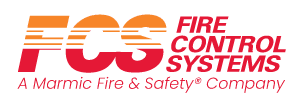Fire sprinkler systems are all designed to put water on fires, so they don’t get out of control. That is why it is important to choose the right sprinkler system for your building. The four most common types are explained below to help you make the right decision for your needs.
Wet Pipe Systems
Wet pipe fire sprinkler systems always have water in the pipes which allows for an immediate response when a fire is detected. Heat activates the sprinkler heads to release the water. They are the most common type of sprinkler installed in buildings, being both cost-effective and low maintenance.
Dry Pipe Systems
Dry pipe sprinkler systems have pipes filled with pressurized air or nitrogen gas. When the sprinkler heads open, the pressurized air empties out of the pipe before water flows. There is a minute delay before the water is released but is useful in buildings where water could freeze if kept in the pipes.
Pre-Action Systems
Pre-action sprinkler systems are a combination of wet and dry pipe sprinkler systems. The pipes are filled with air and require two triggers to activate. When a smoke alarm or detector goes off, a valve opens to let water in before the heads open. They can be set to prevent water from spraying if there is a false alarm or mechanical failure. These systems are primarily used for areas that are at high risk for serious water damage in the event of accidental sprinkling.
Deluge Systems
Deluge fire sprinkler systems are like a wet pipe sprinkler system except the sprinkler heads are always kept open. A specialized fire alarm causes a valve to open and release the water. It must be turned off manually once the valve opens. This system is ideal for highly hazardous areas where rapid fire spread is a concern. They are commonly found in industrial parks and factories.
Each of these fire sprinkler system types has its use. Call Fire Control Systems to help you determine which type would be best to keep your building safe.







